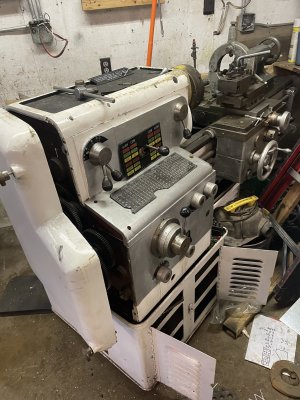Redneck_Sophistication
Super User
I’m prefacing this as a bad, or st the very least not a great idea.
I’ve finally got a motor to install in my lathe that came without one.
tobarapprentice graciously provided me with a 3hp motor he had and I thought it was perfect, it’s a bit of a beast, but so is my lathe, it fits in the lower section/motor compartment but due to the opening between the upper and lower areas the belt needs to be on an angle and there is a web in the base that interferes.
Looks like I would need to cut out the majority of it to fit the motor at the proper location. Obviously this was made like this for a reason, but old iron tended to be over built. I guess steel was free back in the day lol.
Also found it odd that you need to remove the pulley of the lathe to install or replace the belts. :/
Looking from pulley

From the rear

Hole for belt

Needs to move over probably the width of the entire web

Pulley tight to housing

Lathe is a McDougal. Can’t find any info online about it.

I’ve finally got a motor to install in my lathe that came without one.
tobarapprentice graciously provided me with a 3hp motor he had and I thought it was perfect, it’s a bit of a beast, but so is my lathe, it fits in the lower section/motor compartment but due to the opening between the upper and lower areas the belt needs to be on an angle and there is a web in the base that interferes.
Looks like I would need to cut out the majority of it to fit the motor at the proper location. Obviously this was made like this for a reason, but old iron tended to be over built. I guess steel was free back in the day lol.
Also found it odd that you need to remove the pulley of the lathe to install or replace the belts. :/
Looking from pulley
From the rear
Hole for belt
Needs to move over probably the width of the entire web
Pulley tight to housing
Lathe is a McDougal. Can’t find any info online about it.



